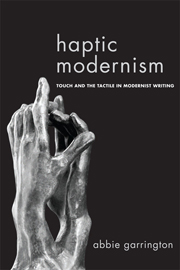Book contents
4 - Dorothy Richardson and the Haptic Reader
Published online by Cambridge University Press: 05 September 2013
Summary
The licking eye
Dorothy Richardson is the fairy godmother of the haptic. ‘Fairy’ because she views cinema as an apparatus and an experience that has to do with magical conjuring, with ‘enchanted eyes’ (Richardson 1998: 177), and ‘godmother’ because her prescient phenomenology of film spectatorship anticipates in crucial ways the work of Laura U. Marks, who in turn has initiated recent critical interest in the haptic aspects of film, and rehabilitated that ‘haptic’ term for common use. While Walter Benjamin's reading of Aloïs Riegl, F. T. Marinetti's tactilism manifesto and Aldous Huxley's evocation of the feelies are perhaps the three texts of the modernist period most conspicuously engaged with the haptic (although not hitherto read in concert), it is Richardson that moves closest, through her adroit descriptions of the somatic aspects of film viewing, to the film theory that dominates contemporary discussion of that ‘haptic’ term. In Chapter 1, we noted that Gilles Deleuze considers the bas-relief of the Egyptian artistic assemblage, brought to modernist attention via Benjamin's engagement with the art history of Riegl, as an opportunity to consider
the most rigid link between the eye and the hand because its element is the flat surface, which allows the eye to function like the sense of touch; […] it confers […] upon the eye a tactile, or rather haptic, function.
(Deleuze 2002: 99)- Type
- Chapter
- Information
- Haptic ModernismTouch and the Tactile in Modernist Writing, pp. 142 - 154Publisher: Edinburgh University PressPrint publication year: 2013



